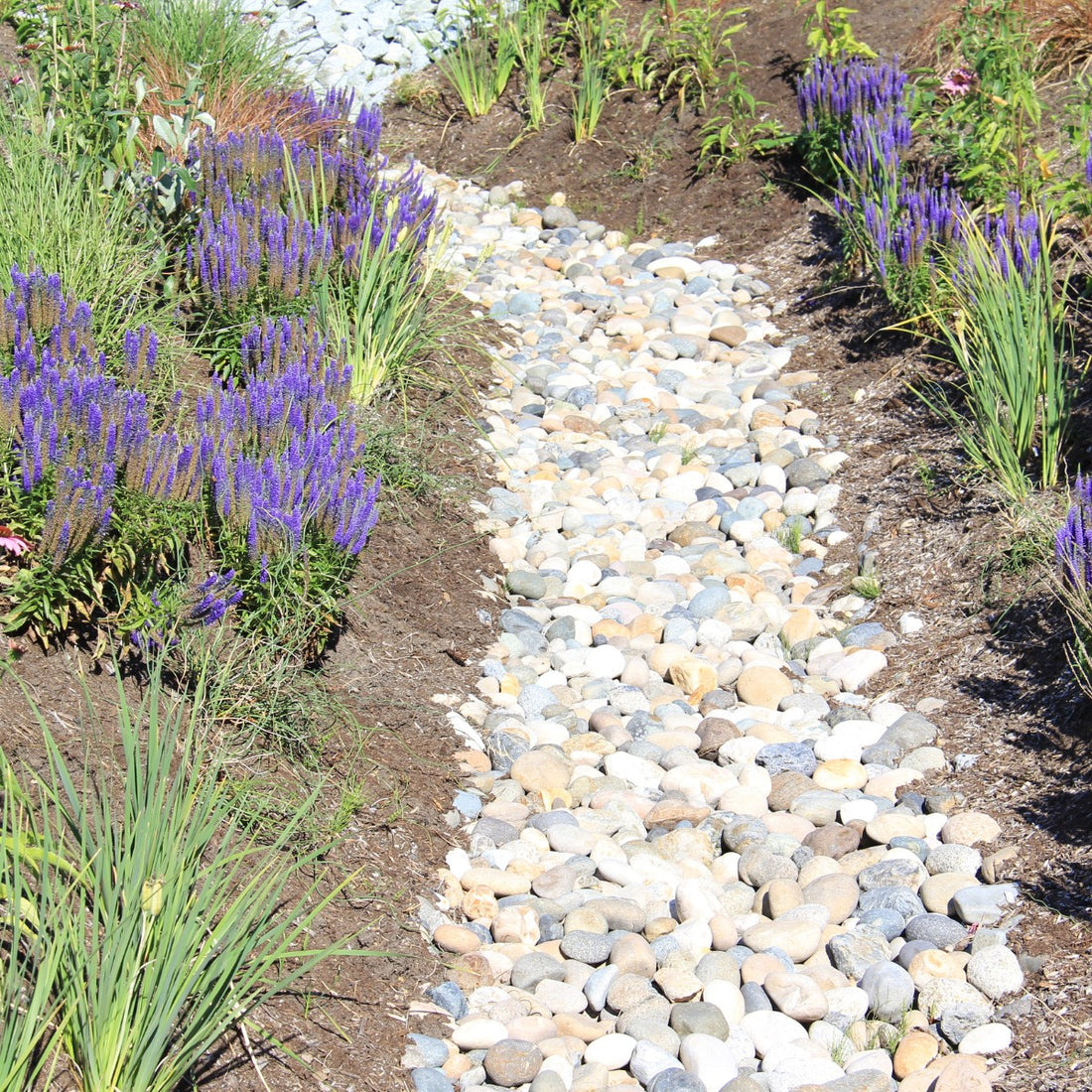Many homeowners face problems with garden drainage. Poor drainage can harm plants, create places for mosquitoes to breed, and lead to costly damage to homes. While drainage issues can be overwhelming, they are manageable with the right knowledge and approach.
The first step is to identify the drainage problems. Careful assessment will help you choose the right solutions that fit your budget and needs. Whether you have soggy soil in your vegetable garden or constant puddles in your yard, there are effective solutions for every budget and skill level.
Identifying Your Garden's Drainage Issues
Recognizing drainage issues early can save your garden from severe damage. Above all, understanding the telltale signs of poor drainage helps you address problems before they worsen.
Common signs of poor drainage
Your garden might be struggling with drainage if you notice these warning signs:
- Standing puddles that persist 24-48 hours after rainfall
- Consistently soggy or spongy ground
- Moss or algae growth in unexpected places
- Yellowing or wilting plants despite adequate care
- Foul odors from stagnant water
- Visible soil erosion or exposed plant roots
How to conduct a proper drainage assessment
You can check your garden's drainage rate with a simple test. First, dig a hole that is 12 inches deep and wide. Fill the hole with water and let it drain completely. Then, refill the hole and measure how fast the water level drops. Ideal drainage happens when the water level drops 1 to 3 inches per hour.
The composition of your soil significantly influences its drainage capabilities. Furthermore, three main soil types affect water movement differently:
- Clay soil has tiny particles packed closely together, consequently retaining water but draining poorly. This often leads to compaction and surface pooling.
- Sandy soil drains rapidly—sometimes too quickly—at rates of 1-10 inches per hour.
- Loamy soil is a perfect balance of sand, silt, and clay. This soil type allows excess water to drain while retaining enough moisture for healthy plant growth. Loamy soil provides ideal growing conditions for most garden plants.
Quick-Fix Solutions for Immediate Relief
Generally, the first step in managing surface water is redirecting it away from problem areas. Specifically, you can create a simple trench to guide water away from waterlogged spots. For immediate relief, sweep standing water off lawns into borders.
Adding organic matter to your soil is one of the most effective ways to improve drainage. Incorporating a 2-3 inch layer of compost into the top 6-12 inches of soil helps create better drainage pathways. Also, avoid working with wet soil, which can lead to compaction and worsen drainage issues.
For immediate relief in severely waterlogged areas, try these quick solutions:
- Dig temporary channels around valuable plants to encourage water movement
- Remove any mud and silt from plant foliage to help them recover
- Create temporary raised areas for plants using quality topsoil
Pro tip: Instead of adding sand to clay soil, which can make it worse, add organic materials like compost or well-rotted manure. To check if your changes are working, make sure water drains within 8 hours after it rains.
Soil takes time to recover after being waterlogged. If you are replacing dead plants, wait at least one growing season before replanting. This gives the soil time to restore its structure naturally.
Professional Drainage System Options
French drain installation and benefits
French drains are one of the best long-term solutions for drainage problems. This system includes a trench filled with gravel and a pipe with holes to direct water away from areas where it collects. Installing a French drain properly costs between $500 and $4,000, depending on how long and complex the installation is.
The benefits of French drain systems include:
- Protection against basement flooding and water damage
- Prevention of soil erosion and foundation issues
- Support for healthy landscaping
- Potential reduction in insurance premiums
Catch basin and underground pipe systems
Catch basins are very effective at collecting and managing excess water during heavy rain. They use grates to catch water and debris, sending it through underground pipes to proper drainage areas. For the best results, place catch basins at the lowest point of your property to ensure effective water collection and removal.
Natural Drainage Solutions
Rain garden design and implementation
A rain garden is an attractive feature and an effective solution for managing drainage. It collects and filters runoff water, absorbing 30% more water than a regular lawn. To create a successful rain garden:
- Position it at least 10 feet from your house
- Dig a shallow basin 6-8 inches deep
- Create a level bottom for even water distribution
- Add amended soil for optimal drainage
Plant selection for water management
Choosing the right plants is important for managing water effectively. Here is a helpful mix of plants that thrive in wet conditions:
-
Tall Structural Plants
- Joe Pye Weed - Perfect for adding height
- Hardy Hibiscus - Tolerates both wet and dry conditions
- Swamp Sunflower - Produces hundreds of bright blooms
-
Ground-Level Plants
- Cardinal Flower - Ideal for stream edges
- Japanese Primrose - Produces vibrant spring blooms
- Marsh Marigold - Thrives in constantly moist soil
Eco-friendly materials and approaches
Sustainable drainage involves more than just choosing the right plants. Just like in natural forests, where at least 50% of rainwater soaks into the ground, you can create similar conditions by:
- Using organic mulch to improve soil structure
- Creating natural water pathways
- Installing permeable surfaces where possible



